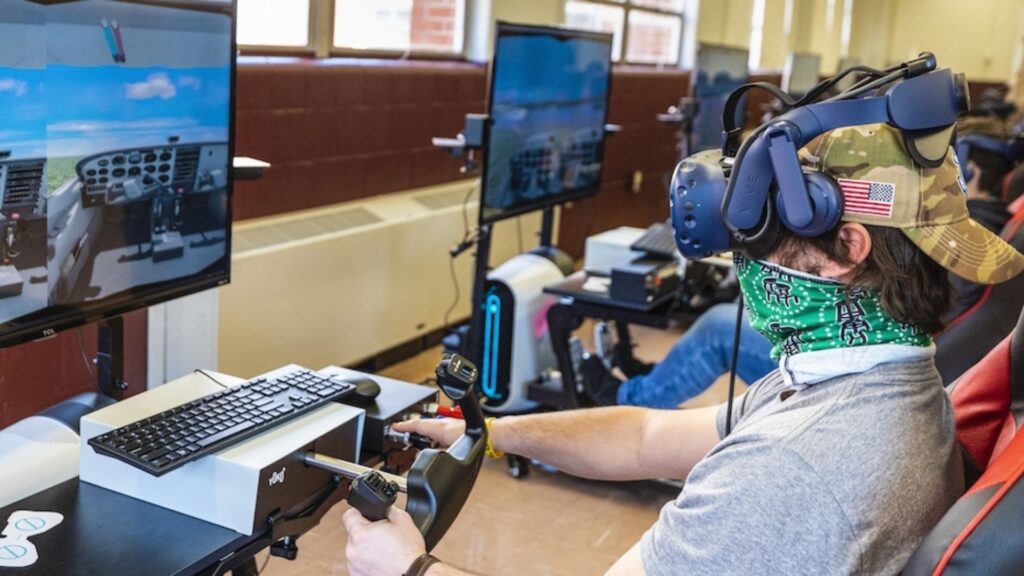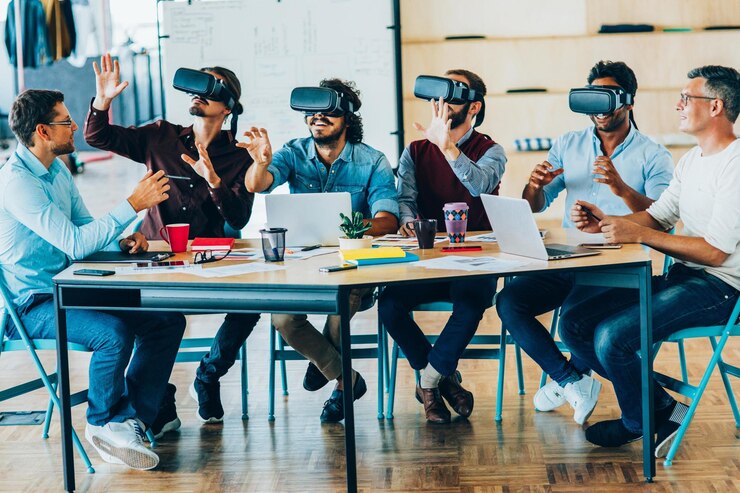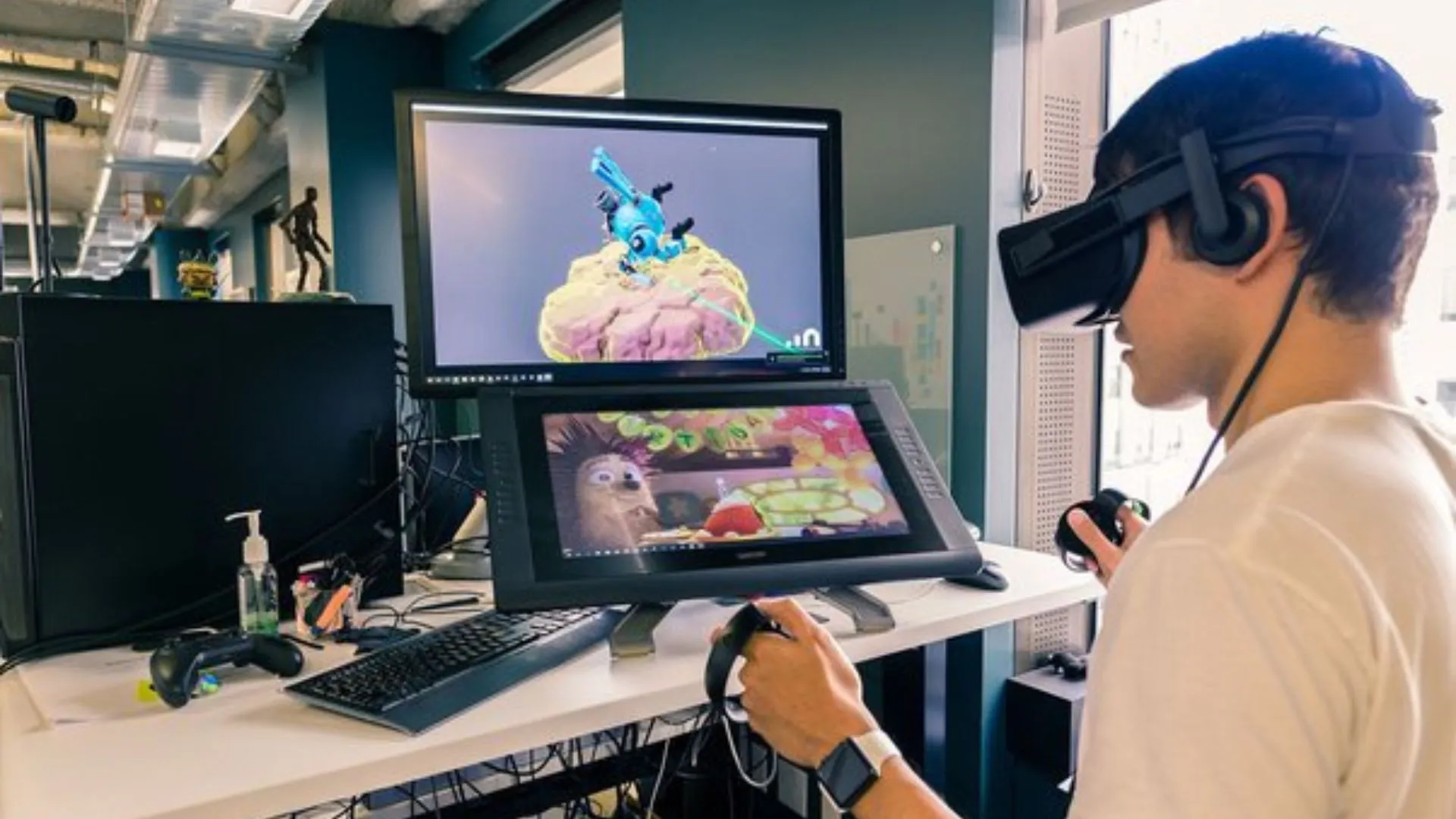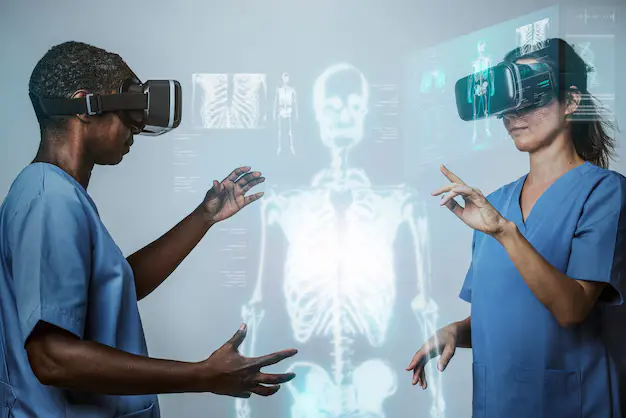Augmented Reality in Manufacturing
Experience the power of AR & Transform your manufacturing processes with Augmented Reality (AR) – where innovation meets efficiency, creating a seamless workflow like never before.
What is AR in Manufacturing
Manufacturing Business is being transformed by AR and it is getting revolutionized. AR in Manufacturing was merely a prediction few years back, but now it is happening for real.
In Manufacturing AR is used to improves processes like assembly, maintenance, training and quality control by integrates virtual elements in 3D (in real-time) within a real environment.
Our Services for AR in Manufacturing

Workforce Training Solution
Boost the efficiency and skills of your manufacturing workforce with our specialized training solutions. From soft skills enhancement to operational know-how, our videos, gamification, and VR content are designed to meet the unique needs of the manufacturing sector.
- Tailored training for manufacturing processes
- Enhances soft skills and operational knowledge
- Innovative learning methods including VR
Safety Training Solution
Ensure the highest safety standards in your manufacturing facilities with our comprehensive Safety Training Solution. Cover crucial topics like machinery safety, chemical handling, and emergency response through engaging, interactive formats.
- Focused on manufacturing safety requirements
- Covers a wide range of safety topics
- Available in video, gamification, and VR formats


Custom AR/VR Development
Immerse your workforce in a virtual manufacturing environment with our Custom Virtual and Augmented Reality Development. Experience hands-on training for complex machinery operation, safety protocols, and process optimization without the risks of real-world training.
- Customized AR/VR experiences for manufacturing
- Safe, hands-on learning for complex operations
- Enhances understanding and retention
Visitor Induction Solution
Streamline the induction process for visitors to your manufacturing sites with our efficient, digital solution. Quick QR code scans lead to informative induction content, ensuring all visitors understand your site-specific rules and safety measures before entry.
- Simplified access and registration via QR code
- Customized content for manufacturing site safety
- Instant certification to ensure compliance

Development of AR for Manufacturing

Identify Use Cases and Objectives
Identifying specific use cases and objectives for implementing AR in manufacturing. Defining the goals and expected outcomes of the AR.
Understand the Manufacturing Process
Understanding the manufacturing process and workflow where AR will be implemented.
Selection of AR Development Tools
Choosing AR development tools and platforms based on requirements. Popular AR development tools include Unity 3D, Unreal Engine etc.
Integrate with Manufacturing Systems
Integrate the AR application with manufacturing systems, databases and software platforms to access relevant data, instructions and workflows. Data exchange between the AR application and systems.
Test and Iterate
Testing the AR application for its functionality, performance and usability. Testing the application with end users and gathering feedback for improvement.
Deployment
Deploying the AR application in manufacturing unit and provide training. Providing ongoing support and updates needed.
Benefits of AR in Manufacturing
Digitalized Work Instruction
The workers are guided through standardized process instead of reading the manuals within one point of time only. The AR guides the works for a particular thing in a particular time without wasting time and working digitally. By using the Videos & Audios in the digital format and integrating it with other features the working instructions are given.
Any time Access of Information
AR enables the workers to access the related information whenever they need it which in result boost the onboarding process specially new members and also helps the existing member to easily navigate with new products.
Reduction in Material Cost & Wastage
AR technology helps one to do tasks repetitively without wasting any material or other resources. it also prevents huge amount of error in the manufacturing process and also saves time and material by making some process automated.
Quality Assurance
In traditional method the Quality can only be examined the end of process but with advancements in AR solutions a quick examination can be done at any stage of production cycle. The AR solution identifies errors, torque, correct wire placement etc. And also stores inspection data. Thus it assures quality in a better way.
Safety & Efficiency
Physical guides are replaced by AR and provides navigation to task in safer manner. Many of the task can be done without any involvement of hands with complete awareness.
Product Variation
As the work instruction are added to the AR systems the workers get used to it and adapt the product variation very quickly & conveniently with the help of AR systems.
Future of AR in Manufacturing
The development of Augmented Reality is growing and expanding at rapid rate as new announcements related to AR hardware and software every year. The most significant opportunity of AR is the integration of AR with AI. The integration of AI in AR has huge potential of autonomation.
The future of AR in manufacturing has potential to transform the industry by improving productivity, efficiency, safety & innovation. AR technologies continues to develop the uses of AR by manufacturers for competitive advantage in the digital age is increasing.

CASE STUDIES

AR for Aircraft Assembly

AR as Visitor Induction

AR for Quality Assurance
General Knowledge Base
- Identify Use Cases: Begin by identifying specific use cases and applications for AR technology within manufacturing operations.
- Assess Business Needs: Conduct a thorough assessment of your business needs, challenges and opportunities that AR technology can address.
- identify a solution provider: Contact with companies AR solutions provider and tell them your needs and wants from solution.
- Integrate with Existing Systems: Integrate the AR solution with existing manufacturing systems, databases and software platforms to access relevant data, instructions, and workflows.
- Implement Feedback Mechanisms: Implement feedback mechanisms to gather input and insights from users during the pilot program and after full-scale implementation.
- Major AR solutions can run on smart phones and tablets as they are affordable, accessible to workforce.
- Wearables AR: Some of the AR work best or only work on wearing Headsets devices. Even the smartphone/tablet AR solution can sometime run on headsets.
Yes definitely AR is much safer than the traditional methods that are used in the workplace. As AR is completely digitalized it allows the workforce to maintain situational awareness. AR improves safety with clear warnings.
That depends on the AR solution one is using in the system and how that system is created. There are AI software which can connect to the other systems but there are also some AR software that can’t connect to other enterprises. We provide both.
In fact every AR is powered by AI. The advancement of AI & Machine learning desires for integration with AR with Industrial AI tools which search defects during visual inspections an automatically file reports. AR promises to make AI a big data tool for the workforce.
The costing of AI hugely depends on the technology, devices requirements, use case Etc. Beyond the initial cost of software, the cost of data, cost of hardware etc. Are considered. Some requires less investments and some requires gradual investments. However we provide optimum cost of AR solution for you.
- Marker-based AR.
- Markerless AR.
- Location-based AR.
There are many types but this types are in most common use.
Join us to grow your skills in Augmented Reality in Manufacturingt & Grow your Professional Career.


